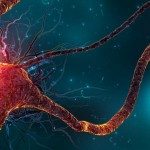Project: probing neural computation in an insect “brain”
Can we understand how insects are able to perform complex probabilistic tasks, leveraging only small neural networks, where numerous machine learning tasks require large scale architecture and computationally extensive training on massive datasets?
Evolution is able to shape decision making in neural circuits of reduced size, scale and with efficient energy consumption while maintaining high (sometimes optimal) performance. Insects can navigate in complex varying environments, navigate in turbulent odour flows to reach targets, learn the statistical properties of their environment to adapt decision making, and can integrate large amounts of sensory inputs and encode internal states (for example stress) that influence probabilistic responses to external signals. It is also worth noting that evidence increasingly points to insects having subjective experience. Yet, the full function of even the smallest insect nervous systems remains to be understood.
From imaging to identifying biological neural networks/circuits: To understand the larva neural network we will leverage multiple amortized inference approaches to analyze a massive database of behavioral imaging (~ 5 000 000 larvae) under neural stimulation (optogenetics), static and dynamics fluorescent imaging of its entire nervous system (1000 images and videos) and neural connectome imaging (10 000 neurons from electron microscopy). We will combine supervised/unsupervised structured learning on the larva video database to generate a dictionary of behavior. Finally, we will use variational inference to map the behaviors onto their neural substrate to discover circuits of interest. Preliminary results have already found neural circuit as small as 10 neurons that could provide a robust, context dependent, probabilistic output between multiple behaviors following noxious sensory signals. Recent results (under publication) have both mapped 1500 neurons onto behavioral outputs but also found signature of actions unpredictability generated by dedicated circuits.
From biological neural networks to algorithms: Results from previous analysis will provide dozen of circuits whose function will be characterized: i) by optimizing various objective functions on the circuits architecture ii) by simulating learned behavior in virtual environments with physics encoded rules (odor, temperature, mechanical etc), iii) by evolving these circuits under multiple constrains to probe robustness and generalization.
The Decision and Bayesian Computation laboratory, DBC, gathers theoretical physicists, software engineers, applied mathematicians, and biologists to address decision making in various biological systems. Globally, we question how evolution shapes decision making, from nanoscale environmental engineering of the cell membrane, to navigation strategies in turbulent flows. We address these questions by joining physical modelling, Bayesian inference, information theory, and biological experiments. The laboratory belongs to the computational biology department (DCB) and the neuroscience department (Neuro).
We are looking for highly motivated master’s students – PhD students – postdoctoral fellows to address this highly interdisciplinary project. Candidates should have a strong background in machine learning or statistical physics and have strong programming skills. They should be willing to get familiar with neuroscience and work with researchers from different scientific backgrounds. This project will be done in collaboration with multiple labs Zlatic (cambridge), Jovanic (neuroPSI), Ohyama (Mcgill), and Gershow (NYU). The project is funded by the Institut Prairie (prairie), the ANR and the Institut Pasteur.
Please contact Jean-Baptiste Masson (jean-baptiste.masson@pasteur.fr).







